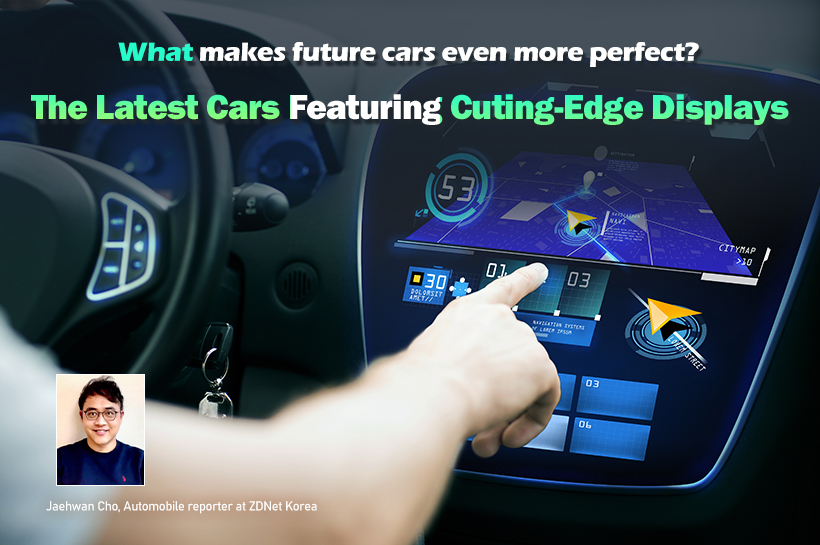
The automotive display has emerged as a core component of a car that provides essential driving information to drivers and passengers. The time has begun when a single display in a car to replace essential car devices such as gauge cluster needles or car stereo with physical buttons. On top of this trend, the pandemic-triggered social distancing measures encouraged people not to use public transportation and to spend more time in a car, boosting the adoption of automotive displays. Now, displays are more than just a navigation and media playback device but serve entertainment functions from watching movies, listening to music, and playing games.
Automotive Display, an essential component of a car
Only five years ago, displays mounted on a car featured limited functions. A few years ago, in the instrument cluster, a 3.5-inch or 4-inch display that delivers vital vehicle information was often placed in both sides of the gauge cluster needles. This display mirrors driving information, including a trip computer, vehicle’s driving performance status, average fuel economy, digital speedometer, vehicle settings, and advanced driver assistance system (ADAS). Information can display in black and white or colors depending on the car model or trim level.
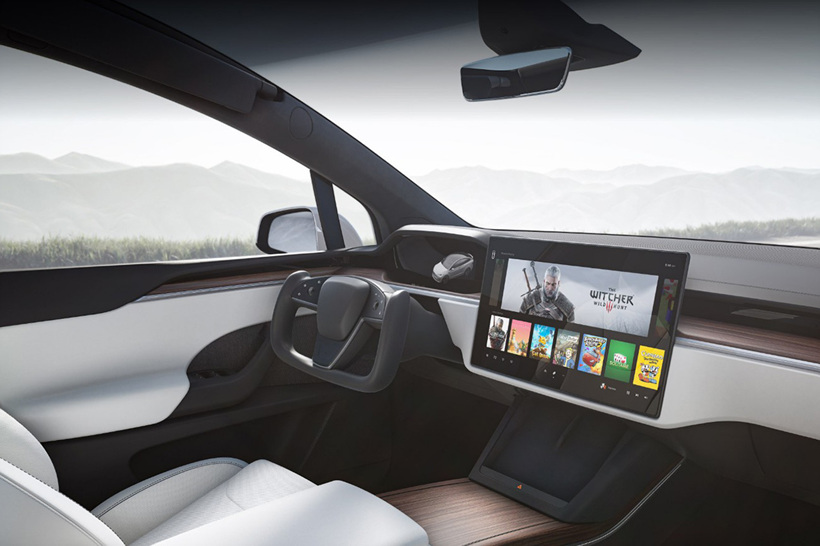
However, growing interest in future car markets such as electric or self-driving vehicles encouraged Korean automakers to increase the size of the automotive display of instrument clusters. Taking up to 10.25 inches, the larger display even removed the speedometer needle and engine RPM tachometer. A fully digital instrument cluster isn’t just limited in displaying the vital information of a vehicle but also diverting themes for different driving modes. Korean automakers took a step further and adopted the technology that changes the display according to day and weather.
In future vehicles, the fully digital instrument cluster is highly likely to trickle down to standard specification instead of being an option for high-priced models. This has much to do with autonomous driving. When driving a self-driving car, For drivers to check the lane driving status on the road, the screen must show circumstances around in every position. Also, the display should cover a broader range of driving information, so a high-resolution display is a crucial feature.
While a fully digital instrument cluster focuses on supporting driver’s safety, display embedded in the center fascia, door trim, and passenger seats can entertain occupants on the passenger and rear seats and sharply enhance driving safety.

We should also pay greater attention to digital side-view mirrors. Digital side mirror system for vehicles serves as a replacement for conventional mechanical wing mirrors. When the camera replaces the wing mirror, it reduces aerodynamic drag, improving the driving range of electric vehicles (EVs) and lowering fuel consumption of internal combustion engine (ICE) cars. Moreover, it can show a clear peripheral view onto in-car display even when visibility outside windows reduces by rain or snow.
Which cars equipped with cutting-edge automotive displays?
Working in tandem with the IT and display industry, the automobile industry leads digital side-view mirrors trends with OLED display panels. The displays play a pivotal role in continuously showing traffic flows of adjacent lanes while driving. Among the vehicles currently unveiled in the Korean market, Audi’s e-tron 55 Quattro and Hyundai Motors’ IONIQ 5 housed the OLED displays as a replacement for traditional side-view mirrors.
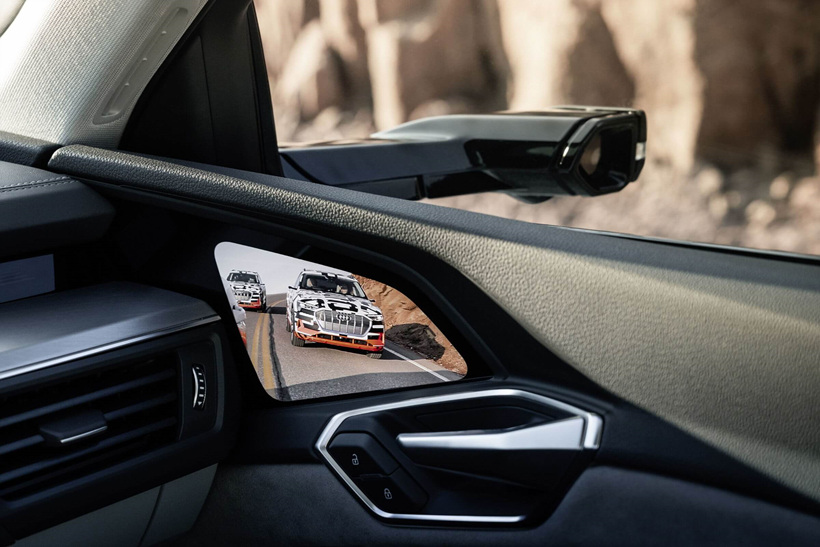
It is because of the weather that made the automobile industry consider adopting OLED panels for projecting images from digital side mirror systems. Conventional LCDs have a slow response time due to lowered viscosity of liquid crystals under low temperature, causing slow screen transition. However, OLED displays are proprietary light-emitting without physical movements so that they deliver excellent performance even under cold weather. Since Korea has four distinctive seasons and recently underwent a freezing winter with several rounds of heavy snowfall, OLED displays that resist well in cold weather are well-suited. Both IONIQ5 and e-tron adopted OLED display panels from Samsung Display.
I have test-driven Audi e-tron equipped with a digital side mirror system. At first, I was unfamiliar with the cameras and screens where mirrors have always been. But as I drove along the road, the digital system was more convenient than traditional mirrors. In particular, what I like the most is that the OLED displays deliver excellent outdoor visibility even under glaring sunlight.

The digital side mirror system of Hyundai IONIQ5 has a rectangular display design, while Audi’s e-tron houses a diamond-shaped OLED display. During my test drive, I could have a clear view of the outside through in-vehicle screens. Also, the screens allow virtually seamless images to the viewers with fast screen response time. I believe drivers used to the traditional mirrors can quickly get used to it.
Not only electric vehicles but also many typical ICE cars stressed the adoption of displays. Mercedes-Benz is a case in point. Mercedes was the first automaker to house a single display design that encompasses instrument cluster and center fascia. Then several carmakers, including Hyundai Motors and Kia Motors, follow suit.
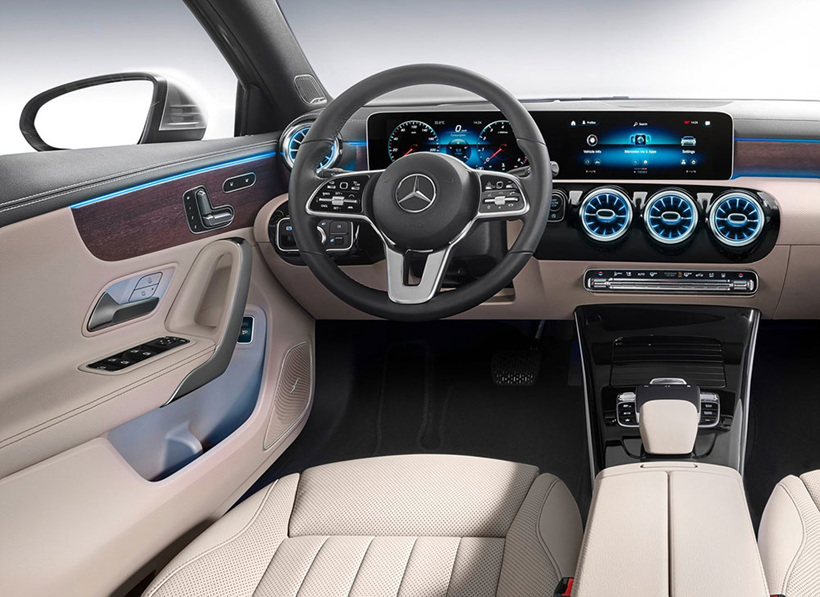
Even Mercedes-Benz A-Class, one of the least-expensive vehicles, adopts a display instead of gauges cluster needles. A-Class comes with a dual 10.25-inch digital instrument cluster and touchscreen multimedia displays. The digital instrument cluster provides different graphic designs depending on a driver’s style or runs a navigation system. Moreover, for advanced driver-assistance systems (ADAS), the displays show alerts to maintain a proper distance between a vehicle and the vehicle ahead or assist lane-keeping and land centering.
Of Korean brand cars, the latest Kia Carnival Hi-Limousine packs in displays for rear-seat passengers. Passengers can watch movies or cartoons during long hours of travel. In addition, recently-released cars feature multi-connection functionality so that passengers can have access to various kind of content from YouTube or Melon, a music streaming service. By simply adopting an in-car touchscreen, all passengers can enjoy these full of fun entertainment content conveniently. Some cars also feature voice-assisted control function through which car occupants ask for information on today’s weather or stocks, and display search results on the touchscreens. It is fair to say that in-car screens are facilitating communication between the car and the drivers.
In the future, automotive displays will come in a variety of designs tailored to individual drivers. For instance, a Korean start-up company launched a service that allows drivers to download graphic theme for touchscreen just by linking to a smartphone. Designers of these themes can make extra profit from this service. It is good news to consumers of cars who value individual style. Likewise, in-car displays hold boundless potential in automotive applications.
Why the adoption of displays became more important in the era of EVs?
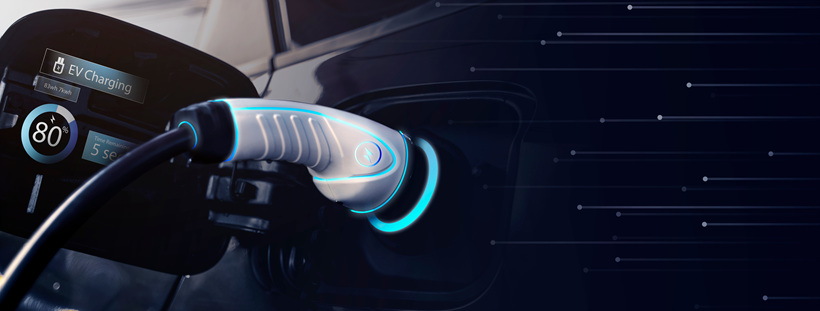
The IONIQ 5 and e-tron mentioned above are pure-electric vehicles run on lithium-ion batteries and motors. It is essential for pure-electric vehicles to display a variety of information. If the in-car displays cannot play a proper role, the drivers may find difficulty in figuring out the critical driving information of EVs.
When driving EVs, the most important functions that a driver should pay attention to are a display of regenerative braking system, current charging status when charging the vehicle, and traffic flow in adjacent lanes when assisted by ADAS. Regenerative braking refers to recapturing the energy lost to heat resulting from the friction between the brake pad and wheels. What makes the regenerative braking system charming is that it increases driving mileage by recovering this kinetic energy back to the battery energy storage.
And the in-car display makes this charming point stand out. When using regenerative braking, it should be able to mirror the vehicle’s status dynamically and easily. The automaker can put in a number of their own color graphics for the regenerative braking system, and the key for showing such graphics is a display with excellent performance. The display needs to play its part perfectly so that drivers can understand EV’s charging status or check and maneuver all sorts of infotainment features conveniently. If the display fails to play its role, it may halve the convenience and safety benefits that EVs intended to deliver.
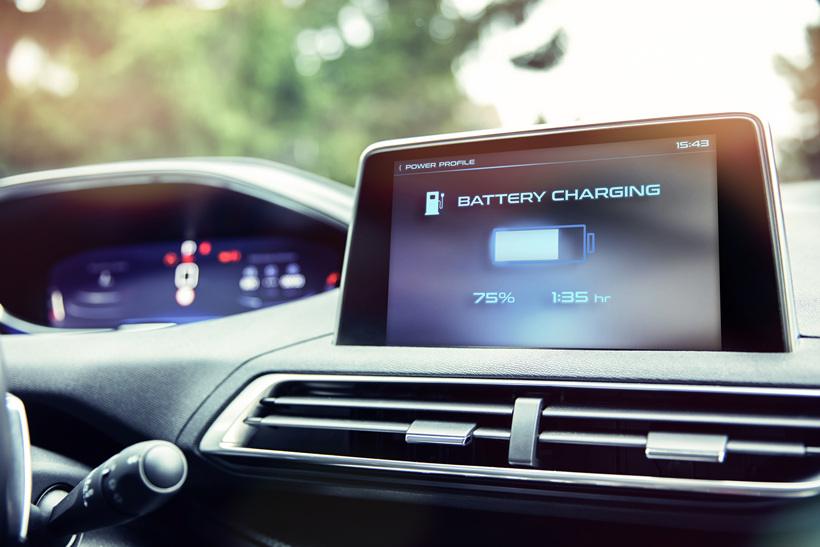
In the near future, a growing number of electric vehicles will be on the road. The growth in EVs will further advance automotive display technology and accelerate the adoption of in-car displays to more diverse cars. I hope the OLED display panels featuring excellent image quality and weather-resistant characteristics meet such demands. Above all, when slim and light OLED panels apply to a vehicle’s various applications, we can expect the automotive displays to lead innovation in cars’ interior design platform. If the automotive displays expand their horizon from just showing information and controlling car systems but bring design innovation and improved safety in driving, it will serve as a massive contributor to not only a pleasant driving experience but also the prevention of all sorts of high-risk accidents.
※ This article holds the editor’s opinion, and Samsung Display Newsroom’s stance or strategies are not reflected.

